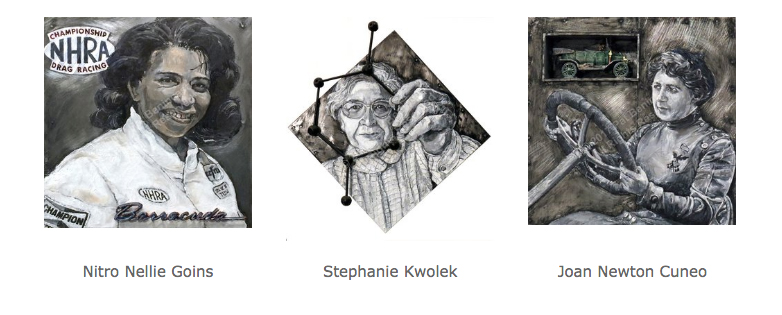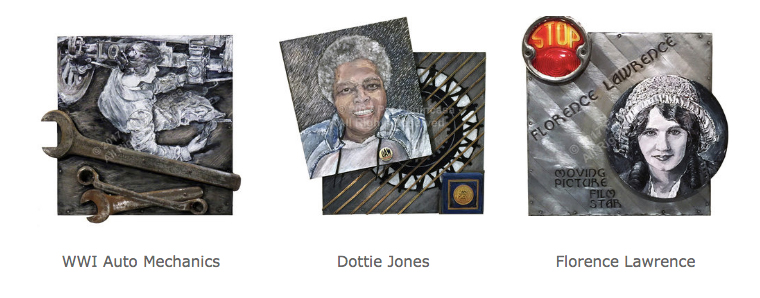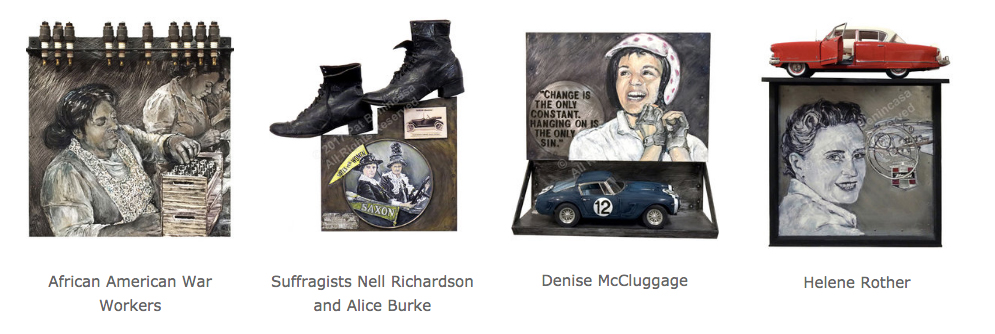Women car accessory inventors such as actress Florence Lawrence and Mary Anderson; African American women factory workers during WW2; and race car drivers like Nitro Nellie Goins and Denice McCluggage existed during a time when it was “strictly” forbidden territory for women to participate, invent, compete in what was considered a man’s jurisdiction. These are an example of the women Pat Benincasa profiles in her documentary short that have been hidden from history for so long. Pat tells “herstory” which really puts a spotlight on history. I watched the documentary and was astounded to learn about these remarkable women who changed the game in the automotive industry. Artist Pat Benincasa talks about her film Women at the Wheel: Stories of remarkable women shattering cultural roadblocks and gendered assumptions. Despite efforts to erase the significant contributions women have made in techno-industrial fields, artist Pat Benincasa tells the story of 13 women who invented, raced, and designed their way into automotive history.
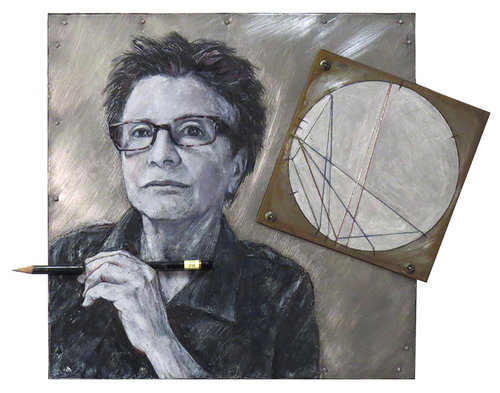
Interviewed by Kaylene Peoples
Responses by Pat Binincasa and John Mark Hostetler
Tell me a little about your film and what inspired you to make Women at The Wheel.
Pat Binincasa: This film is a result of 13 very powerful women on my studio wall, who refuse to ride shotgun in the history of the automobile. I am a visual artist, and I did a series of thirteen 12″ x 12″ sheet metal paintings of a woman or group of women with an authentic artifact from the period the woman lived. The series spans the history of the automobile from the 1900’s to present day: “A Woman of Industry,” Essay by David Gibson, Gibson Contemporary, NY. From inventing windshield wipers and brake lights to setting speed records in national/international racing events, or inventing Kevlar, or making interior design a key automotive component, these women made important contributions to the techno-industrial landscape. They defied soul-crushing social norms to make, do and be. Their stories are timeless because the truth of their lives is like an IOU: The payment of their achievements comes due with every woman who dares to make her own way in the world. Every day, when I step in my studio, there they were. Waiting.
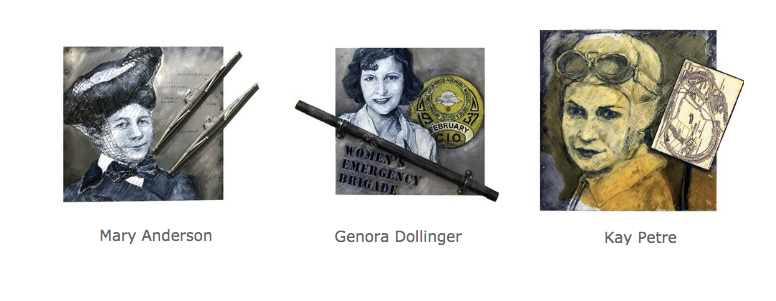 The more I researched and got to know their stories, I knew that they needed to speak for themselves. One was a refugee from the Nazi’s and with her seven-year-old daughter, was placed in a displaced persons camp until coming to the US. Another one had competed in cross country auto races and won over nationally known male racers so Triple A banned women from competing. One fought for labor justice and became the Joan of Arc of Labor, starting with the 1936-37 Great Sit Down Strike in Flint. I could go on, but the point is, their stories are relevant today and need to be told! The Puffin Foundation gave me a grant based on my work with Women at The Wheel! Getting that recognition and money really got me thinking about making a short documentary. I had never made a movie before, but as a visual artist, I have always follow where an idea leads me, and then learn new materials and methods of creating. I trust that the idea will take form.
The more I researched and got to know their stories, I knew that they needed to speak for themselves. One was a refugee from the Nazi’s and with her seven-year-old daughter, was placed in a displaced persons camp until coming to the US. Another one had competed in cross country auto races and won over nationally known male racers so Triple A banned women from competing. One fought for labor justice and became the Joan of Arc of Labor, starting with the 1936-37 Great Sit Down Strike in Flint. I could go on, but the point is, their stories are relevant today and need to be told! The Puffin Foundation gave me a grant based on my work with Women at The Wheel! Getting that recognition and money really got me thinking about making a short documentary. I had never made a movie before, but as a visual artist, I have always follow where an idea leads me, and then learn new materials and methods of creating. I trust that the idea will take form.
How long did it take to complete the film? What was it shot on? Tell me about the filmmaking process.
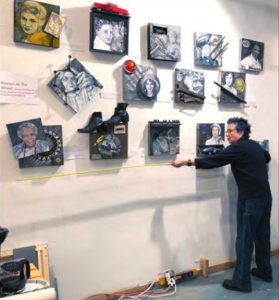
Pat: The actual painting of the 13 women started in 2014 and ended 2017. It was in 2017 when I began the movie about them.
So when you ask how long did it take you to make the movie, I would have to include the time for making of the paintings! The actual movie making took about a year.
Process:
I started in the order that I painted the women. I organized 13 digital plus physical piles (each woman): emails, historical societies communications, UAW Women emails, letters, automotive museum emails, several books, many photographs, articles, magazines, archived newspaper articles, etc. Of the 13 women, all are dead except for two. But that is later in the story! To make this documentary I used iMovie to structure the narrative. There were givens:
- keep each life direct/essential
- Let them speak for themselves (Get out of their way!)
- Add music specific to the time of each woman
- Design “Digital Constructs” when needed
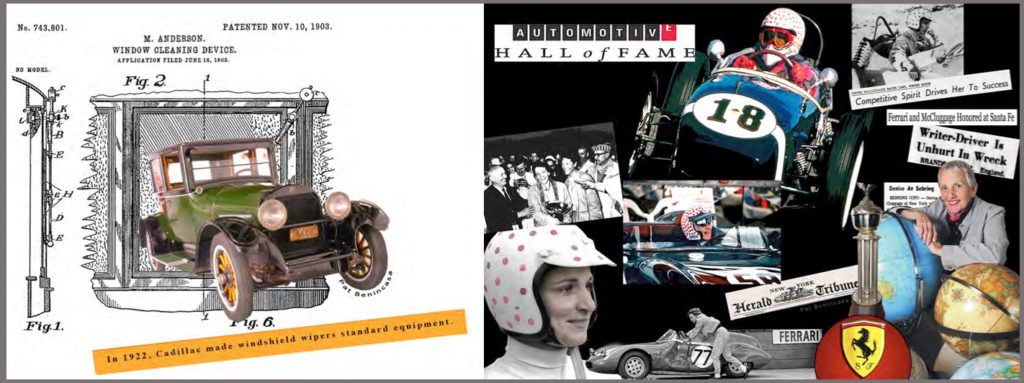
“Digital Construct” is what I call taking multiple images, archival info and turning them in to a graphic. In the editing, some of the Digital Constructs were not used. Once I had the bulk of the movie in iMovie, and pieces of music selected, I talked to John Mark Hostetler about WATW. He said he wanted to support my work and I asked him to be video director. I sent him the iMovie and all of my research materials. From there, it was a couple of intense Drop Box months of back and forth and him making creative changes. We were truly in sync, in the process.
Continuing the Process . . .
Once I had the bulk of the movie in iMovie, and pieces of music selected, I talked to John Mark Hostetler about WATW. He said he wanted to support my work and I asked him to be video director. I sent him the iMovie and all of my research materials. From there, it was a couple of intense Drop Box months of back and forth and him making creative changes. We were truly in sync in the process. John Mark used Final Cut Pro.
Pat’s explanation of the process to John Mark:
“What you are doing in this video is creating a “digital “ museum. Paintings in an art museum sit quietly on their wall location. They are objects of static contemplation. This video is reframing a museum experience in contemporary terms. The subject of these paintings require dynamic presentation – exactly as you are doing. But the episodic nature of each life is culminated in -the -painting. In doing this you are not only making a video about these women, you are introducing how paintings will be viewed in 21st century time/space realities.”
You had an interesting crew! I’d love to hear about it.
Pat: The cast consisted of 13 sheet metal paintings and crew was myself, John Mark and voiceover actor, Melissa Epp. Epp’s voice seemed to exude a nuanced understanding of each woman
What was your experience on Women At The Wheel? What drew you to this film?
John Mark Hostetler: It was such a joy working with Pat Benincasa to create a video visual that highlights the incredible stories of women in the automotive industry. I’ll never forget first seeing these captivating multi-dimensional art pieces in Benincasa’s Saint Paul studio. My goal, as the film’s director, was to honor Benincasa’s work with the same energy and life that I felt when seeing the collection in person.
Voiceover actor, Melissa Epp, was indispensable in her narration of the film, and of course, we owe everything to the women themselves, whose inspiring stories made it all possible.
John Mark: I edited the film on Final Cut Pro.
What would you say is unique about this film? Were there any challenging moments during production?
Pat: What is unique about this film is that it is a story of what did NOT happen. At times it felt like I was interviewing a black hole. There is a way that when highly creative, resourceful women make significant techno-industrial contributions, their achievements are erased. For example, did you know that a woman invented windshield wipers or brake lights? Historically, there has been a gendered assumption about the automobile being male; even to this day there are derisive remarks about “women drivers.” Finding archival newspaper and photos and letters only filled in parts of the story and . . . in those parts and pieces, fiercely determined women emerged.
What were some of the highlights of filming Women At The Wheel?
Pat: One of the highlights of this film is when a friend of Nitro Nellie Goins, Drag car racer and mother of four contacted me that he was thrilled to see my painting of Nellie. He then put me in contact with her!
Pat Benincasa had quite a bit of email correspondence with Nitro Nellie Goins, first discussing her significant contributions to automotive history. How she would like to be credited, and discussing the importance of Nellie’s daughter knowing her mother’s legacy. Nellie settled on “Nitro Nellie Goins first female African American funny car driver!” And Pat made a custom poster of the painting just for Nellie, too!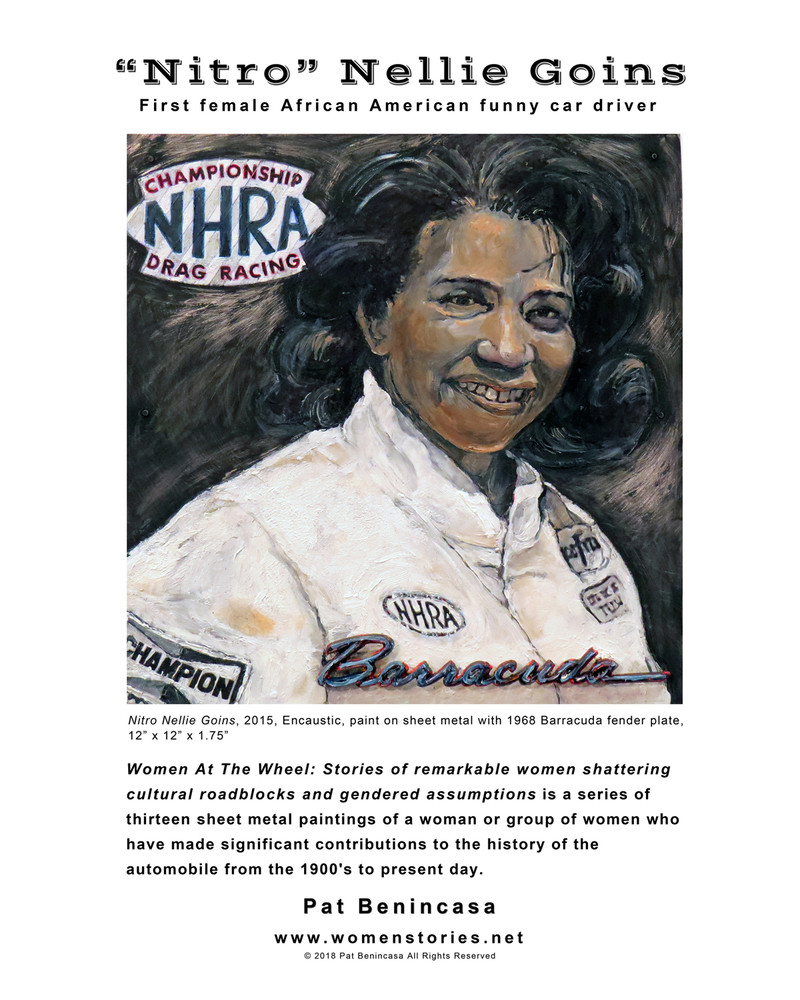
What advice could you give to a first-time director/producer?
Pat: Dear self, don’t worry about what you don’t know. That’s only mechanics. Focus on the stories that need to be told. These women are reaching across decades, years, months and days to ask what has changed?
“Information is knowing. Communication is telling. There must be something of value in the knowing to make the telling meaningful.”
Stories first, structure follows.
Women at the Wheel: Stories of remarkable women shattering cultural roadblocks and gendered assumptions is an official selection of the Artemis Women In Action Film Festival Fifth Edition. Screening info: WOMEN IN HISTORY Sat. April 27, 2019 10:40am | Purchase Tickets.

